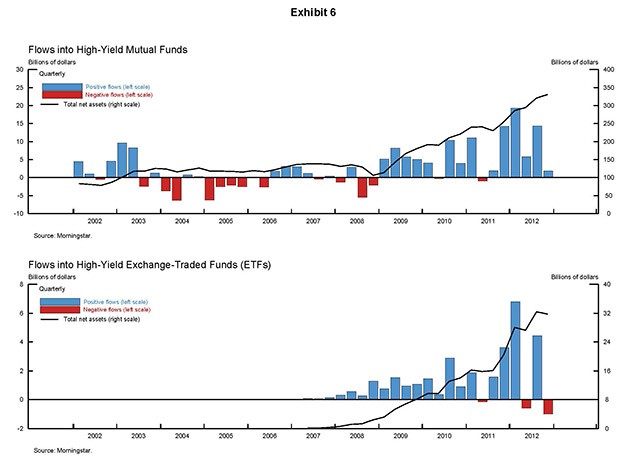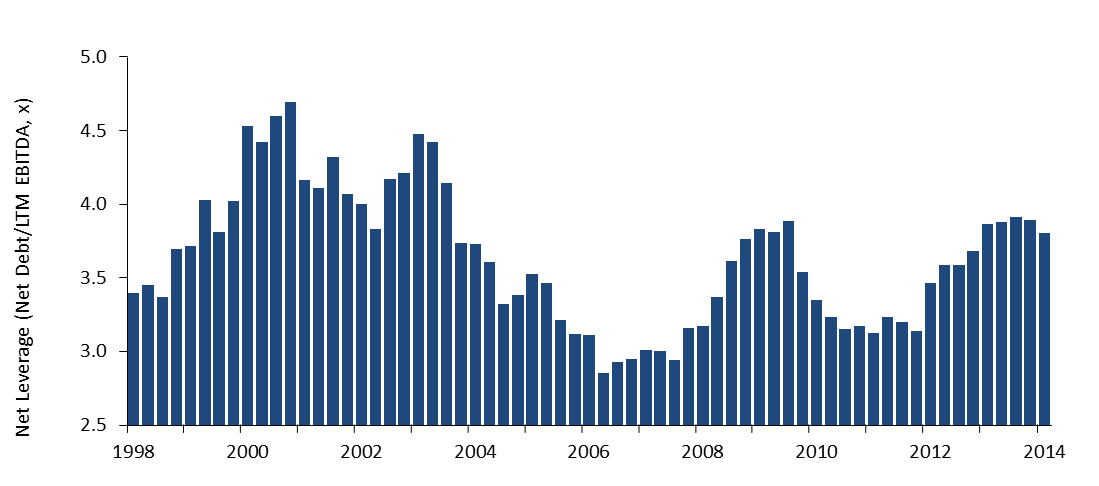Fundamentals of highyield corporate bond exchangetraded funds (ETFs) strong as default rates
Post on: 27 Май, 2015 No Comment

Fundamentals of high-yield corporate bond ETFs strong, as default rates remain low
Amid low interest rates and ongoing stock market volatility, high-yield corporate bond ETFs are drawing significant attention. With appealing income yields, low default rates and solid credit fundamentals, investors are betting that high-yield bond ETFs, such as the $16bn iShares iBoxx $ High Yield Corporate Bond ETF (HYG) and the $12bn SPDR Barclays Capital High Yield Bond ETF (JNK) , both listed on the NYSE, can deliver attractive returns going forward. [See High-yield bond inflows reinforced by ETF growth ]
With attractive income yields, low default rates and solid credit fundamentals, investors are betting that high-yield corporate bonds ETFs can generate attractive returns going forward.
High-yield bonds, also known as junk bonds, offer a higher yield to compensate investors for the increased probability of default. However, defaults rates over the past year or so have been lower than expected. In the US they have even declined slightly, with the latest trailing 12-month US high-yield default rate slipping to 2% from 2.2%, according to Fitch Ratings, a credit rating agency.
Default rates are also predicted to remain low. Based on its forecasting model, Moodys, another of the leading credit rating agencies, expects the global high-yield default rate to rise slightly to 3.1% by the end of 2012, and then to decrease to 3.0% in May 2013. This is low compared to the historical average of 4.8% since 1983.
Looking back, previous waves of defaults have typically been preceded by dramatic increases in company borrowings. However, the current strength of high-yield corporate balance sheets suggests that defaults are unlikely to prove a major restraint on returns. [See High-yield bond ETFs backed by cash-rich corporates ]
Many high-yield issuers have taken advantage of the more accommodating environment of recent years and have refinanced upcoming debt maturities. Consequently, the high-yield market’s debt maturity profile seems broadly supportive of below-average default rates. Impending maturities over the next few years are low, both in absolute terms and also as a percentage of total outstanding high-yield debt.
Many high-yield issuers now belie their sub-investment grade ratings. Many lower-rated companies have worked hard to deleverage over the last four years and are holding a decent amount of cash on their books.
Since spreads, or risk premia, are currently pricing in a default rate much higher than the current rate, there is scope for spread compression (spread compression happens as a result of the price of a bond going up and, as per the inverse relationship between price and yield, the yield going down) over the medium term. [See Yields, downside protection and fundamentals support case for high-yield corporate bond ETFs ]
Another factor in high-yield’s favour is the ongoing surge of liquidity. The high-yield bond market is likely to continue to do well as central banks around the world pump money into the system via quantitative easing (QE). This keeps interest rates low, thereby driving investors to seek higher returns elsewhere, such as can be found in the high-yield universe, as well as helping companies to service and refinance debt a low rates, thus improving the credit fundamentals of issuers.
For UK-based investors looking to gain exposure to high-yield corporate bonds, there are a number of London-listed ETFs worth looking at:
Dollar-denominated

Pimco Short-Term High Yield Corporate Bond Index Source ETF (STHY)
The Pimco Short-Term High Yield Corporate Bond Index Source ETF aims to replicate the performance of the BofA Merrill Lynch 0-5 Year US High Yield Constrained Index by investing in a range of securities broadly similar to the constituents of the index. The BofA Merrill Lynch 0-5 Year US High Yield Constrained Index tracks the performance of short-term US dollar-denominated sub-investment-grade corporate debt issued in the US domestic market with less than five years remaining term to final maturity, a fixed coupon schedule and a minimum amount outstanding of $100 million, issued publicly. Allocations to an individual issuer will not exceed 2%. London (LSE) listed, TER 0.55%.
iShares Markit iBoxx $ High Yield Capped Bond ETF (SHYU)
The iShares Markit iBoxx $ High Yield Capped Bond ETF tracks the Markit iBoxx USD Liquid High Yield Capped Index. This index consists of the most liquid US dollar-denominated corporate bonds with a sub-investment-grade rating, while maintaining a focus on UCITS eligibility. The maximum original time to maturity is 15 years and the minimum time to maturity is three and a half years for new bonds to be included and three years for bonds that already exist in the index. For diversification purposes the weight of each issuer in the index is capped at 3%. London (LSE) listed, TER 0.50%.
Euro-denominated
SPDR Barclays Capital Euro High Yield Bond ETF (SYBJ)














